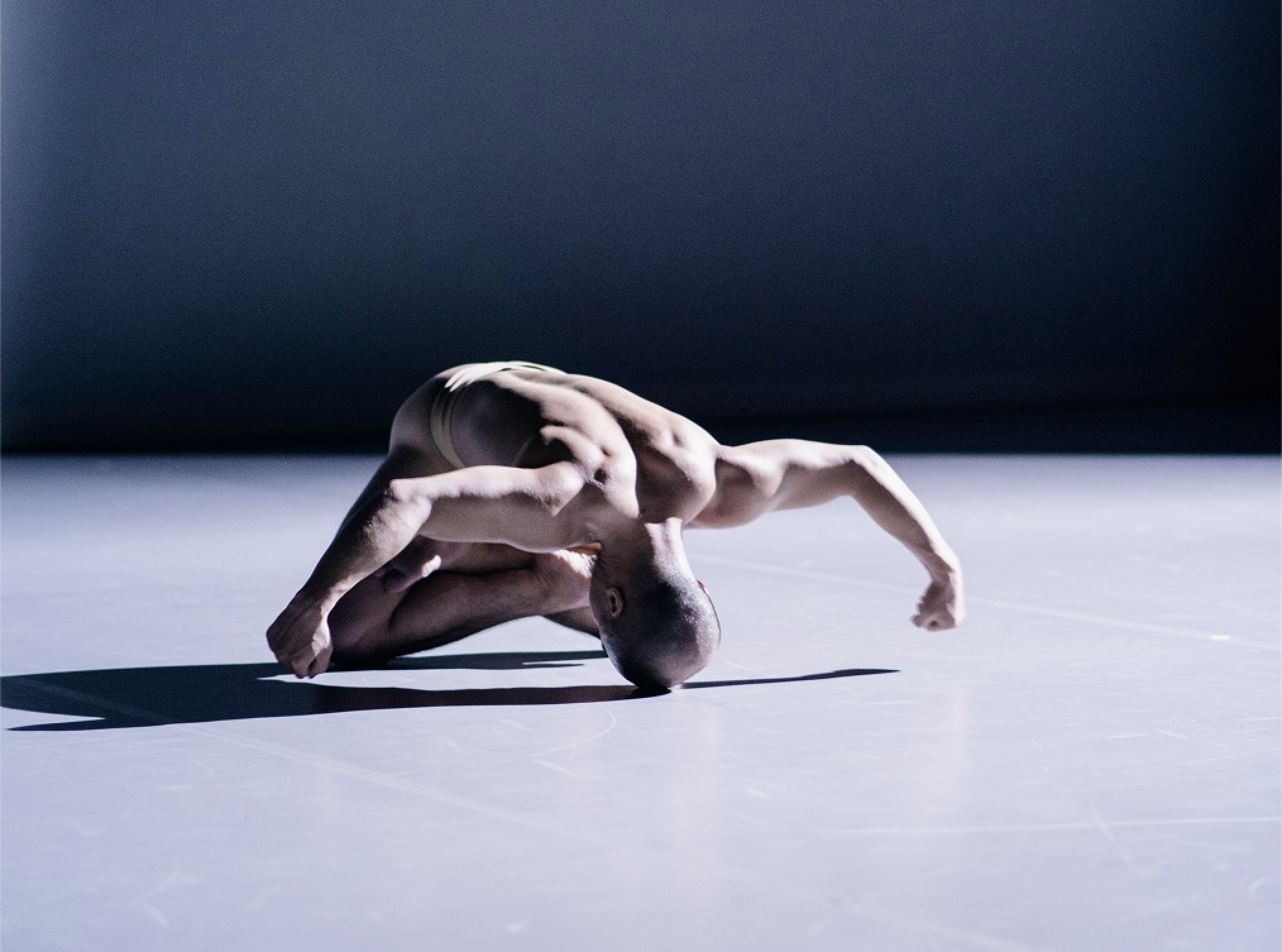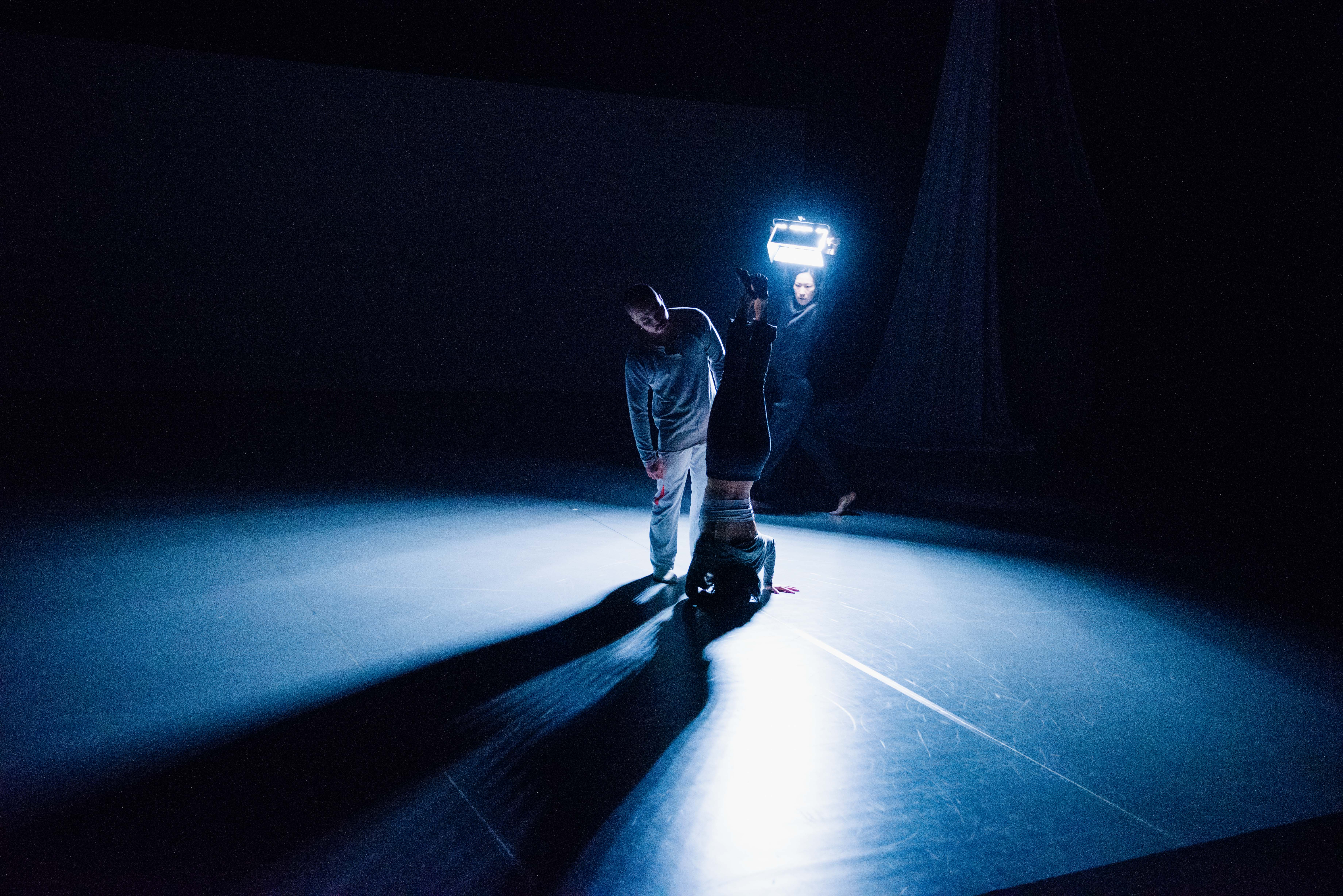On the Canadian Premiere of Liu Kuan-Hsiang’s Kids – An interview with Mirna Zagar
January 15, 2019
By The Dance Centre
Published on January 15, 2019
Taiwanese choreographer Liu Kuan-Hsiang brings his distinctive work to Vancouver as part of our Global Dance Connections series January 24–26. Our Executive Director Mirna Zagar talks to Digital Marketing Coordinator Lindsay Curtis about the artist and his very personal work, Kids.

Lindsay Curtis: Tell us about Liu Kuan-Hsiang and Kids.
Mirna Zagar: I first encountered Liu Kuan-Hsiang at the Aerowaves Spring Forward Festival in Denmark in 2017. This is the largest European Union choreographic platform, and that year it started an exchange project with Taiwan, which featured a presentation of Kids.
From what I understand of his life, he appears to have been a somewhat troubled teenager, changing schools frequently, and chose to go into dance as this was where he thought girls studied in college and it would be fun. When he was just 22 his father died suddenly, and five years later he lost his mother to cancer. He has channelled these experiences into his work: in 2014 he made Hero (The Battle With My Father) in response to his father’s death; and Kids is a tribute to his mother. They even had a family joke that she was jealous he’d made a show about his Dad, and she wanted to know when he’d make a piece about her!
Kids must have been a difficult piece to make, but he displays a healthy dose of self-directed dark humour, and chooses to use English at times in the piece as a self-distancing mechanism. For example he chose Kids as the work’s English title, but the Chinese actually translates as ‘I Know Too Much’.
Kids draws on his mother’s illusions and delusions as the cancer she lived with for 18 years became terminal, eventually robbing her of her sight and the use of her legs. He draws a connection between her illusions and the movies that they loved to go and see together, but then he no longer can share them with her. He recorded his conversations with her and those with her doctors, already thinking he might use them one day in his work. The piece is performed by two female dancers in addition to Kuan-Hsiang himself. At the onset this is a very intimate, personal journey which develops into a kind of rite full of freakish, self-mocking moments, culminating in a serene atmosphere which brings about peace. It is about connectivity, communication, treasuring memories and cherishing having a family. In spite of the subject matter it is not a morbid show at all, but luminous and strangely beautiful in a wild kind of way.

LC: What is the dance scene like in Taiwan? Where would you place Kuan-Hsiang’s work within it?
MZ: Dance in Taiwan mostly falls into three major genres: modern/contemporary dance, ballet, and folk/ traditional. Contemporary dance has been influenced by American modern dance styles (Martha Graham, Merce Cunningham, Contact Improvisation), but is increasingly fusing and cross-pollinating with Asian movement systems such as Tai Chi and Qigong. The best-known Taiwanese dance companies are Cloud Gate Dance Theatre, and Legend Lin Dance Theatre who came to Vancouver for the 2018 PuSh Festival.
Liu Kuan-Hsiang is one of a younger generation of choreographers who are emerging through the general increased mobility of Taiwanese dance artists, and other new developments such as the Taiwan Dance Platform and increasing cross-border collaboration with dance organizations in South Korea, Japan, Hong Kong and China through the HOTPOT network, and more is to be expected with Taiwan’s new National Kaohsiung Centre for the Arts. Works by emerging artists span ideas ranging from mythology and folklore-inspired themes, to martial arts and the breaking of boundaries of what contemporary dance is, and Asian identities; there is a fascination with multimedia, film/video, technology, and the interaction between humans and robots. Taiwanese dance artists are also renowned for their superb performative qualities.
LC: Why did you decide to bring Kids to Vancouver?
MZ: With international touring being an expensive investment and endeavour, one has to wait for the right moment. After seeing Kids in 2017, it was thanks to shared interest with Norman Armour at the PuSh Festival that we were able to join forces to bring the work this year! This is a relatively quick turnaround, further leveraged by the partnerships PuSh has developed with TaiwanFest and the Taiwanese community here. I am thrilled this is happening.
When I saw Kids in Denmark, it was within a very Eurocentric dance context so of course the work stood out and was very different. I was struck by how strong the dancers were, and the theme was very arresting. It is a deeply human work which is very moving. Although inspired by a terminal illness and speaking about death, it is not depressing. As westerners we fear death, and as a society we avoid talking about it. However, death is part of our life’s journey. I think Kids invites people to reflect on the need to connect, come closer, and be in contact with family. It speaks of the human experience and many will be able to relate.

LC: The Dance Centre has been partnering with PuSh since the Festival began fifteen years ago. What has this partnership meant to you?
MZ: Our long-term partnership with the PuSh Festival has been very fruitful, enabling us to expand the range of artists and type of works we can present. It has helped both organizations cross-pollinate audiences and has provided an inspiring context for our year-round Global Dance Connections series. Presenting cutting edge, risk-taking dance works can be challenging in the context of Vancouver’s still rather isolated space when it comes to international work. The overall context has expanded over the past two decades; however geography and economics still have a significant impact. Partnerships with PuSh and other festivals and organizations are key to helping us collectively grow the arts milieu and audiences.
PuSh Assembly Workshop: How I Create My Body Language
In this workshop, choreographer Liu Kuan-Hsiang will present his unique method of choreography and performance, which includes the rational mind mapping yourself, then moving to the communication and exploration within the body – beginning with observing one’s back neck and the space around chest.
After above practice and warm-up, the workshop will proceed on producing physicality materials and charisma. Sound and music will also be applied to this practice. Through the workshop, you can find your own way to perceive yourself deeply.
— write-up provided by Ray Su, collaborator of Liu Kuan-Hsiang
January 26 | 2:30–4:00PM
Scotiabank Dance Centre
Single tickets $25